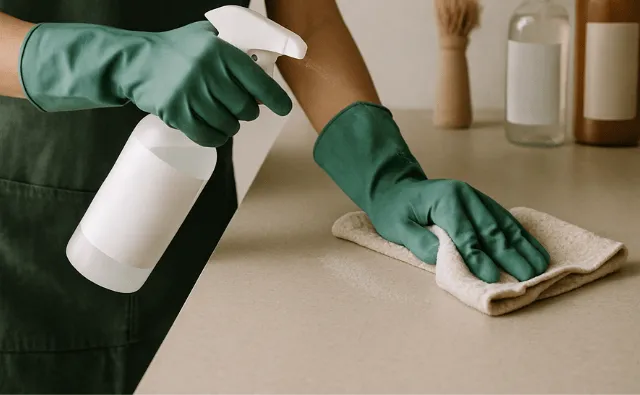Industry News, HI&I Cleaning Care
Safe Use of Disinfectants Discussed

Industry News, HI&I Cleaning Care

John Griep in the Netherlands shares the key points from a recent session about correct disinfection.
The proper use of disinfectants in the professional cleaning sector is essential to protect health, ensure legal compliance, and promote environmental sustainability. A recent knowledge session hosted by VSR in collaboration with NVZ – Schoon | Hygiënisch | Duurzaam and Schoonmakend Nederland, provided expert insights into the differences between cleaning and disinfection, the legal framework for biocidal products, the role of sustainability, and best practices for workplace safety.
Disinfection is a topic that raises many practical and regulatory questions. When is disinfection truly necessary? How can professionals ensure products are effective and legally compliant? A common misunderstanding is the confusion between cleaning and disinfecting. Cleaning removes visible dirt and a portion of microorganisms, while disinfection aims to inactivate microorganisms to reduce the risk of infection.
Both processes are vital, but disinfection is only effective on clean surfaces. A dirty surface, no matter how potent the disinfectant, cannot be properly sanitised. This emphasises the principle: effective disinfection starts with thorough cleaning.
Disinfectants are classified as biocidal products and fall under the European Biocidal Products Regulation (BPR, Regulation (EU) No 528/2012). Only products with a valid authorisation may be used within the EU. In the Netherlands, this typically means approval by the national competent authority, the CTGB.
Disinfectants listed in the CTGB database are legally permitted for use, whether they are nationally authorised, approved under the EU-wide Union Authorisation, or allowed under the transitional regime (which applies to products with active substances still under review). Therefore, checking the CTGB database is generally sufficient to confirm whether a product is legally allowed for use in the Netherlands.
Cleaning professionals should also be aware that product labels must not include misleading terms such as “natural”, “biological”, or “non-toxic”, as these claims are prohibited under EU biocidal legislation.
Excessive or indiscriminate disinfection can be counterproductive. Most microorganisms are harmless or even essential to human and environmental health. The belief that ‘more disinfection is better’ is not only inaccurate but may also undermine microbial balance or lead to unnecessary chemical exposure. Disinfection should therefore be used only where there is an elevated risk of contamination, such as on high-touch points. In many everyday situations, thorough cleaning alone is sufficient to ensure hygiene.
Sustainability is an increasingly important factor in product selection. Some organisations now conduct life cycle assessments (LCAs) to evaluate the environmental impact of disinfection products. At the same time, the rise of chemophobia – a fear of chemical substances – can lead to counterproductive decisions.
Products authorised under EU law are rigorously assessed for safety and should not be avoided simply because they are “chemical”. A clear example is ethanol: although classified as carcinogenic under occupational legislation, its correct use in hand disinfectants has been shown to pose no significant health risk.
Disinfection should never be performed automatically or excessively. Professionals are urged to read product labels carefully, verify regulatory status and assess real hygiene risks before applying disinfectants.